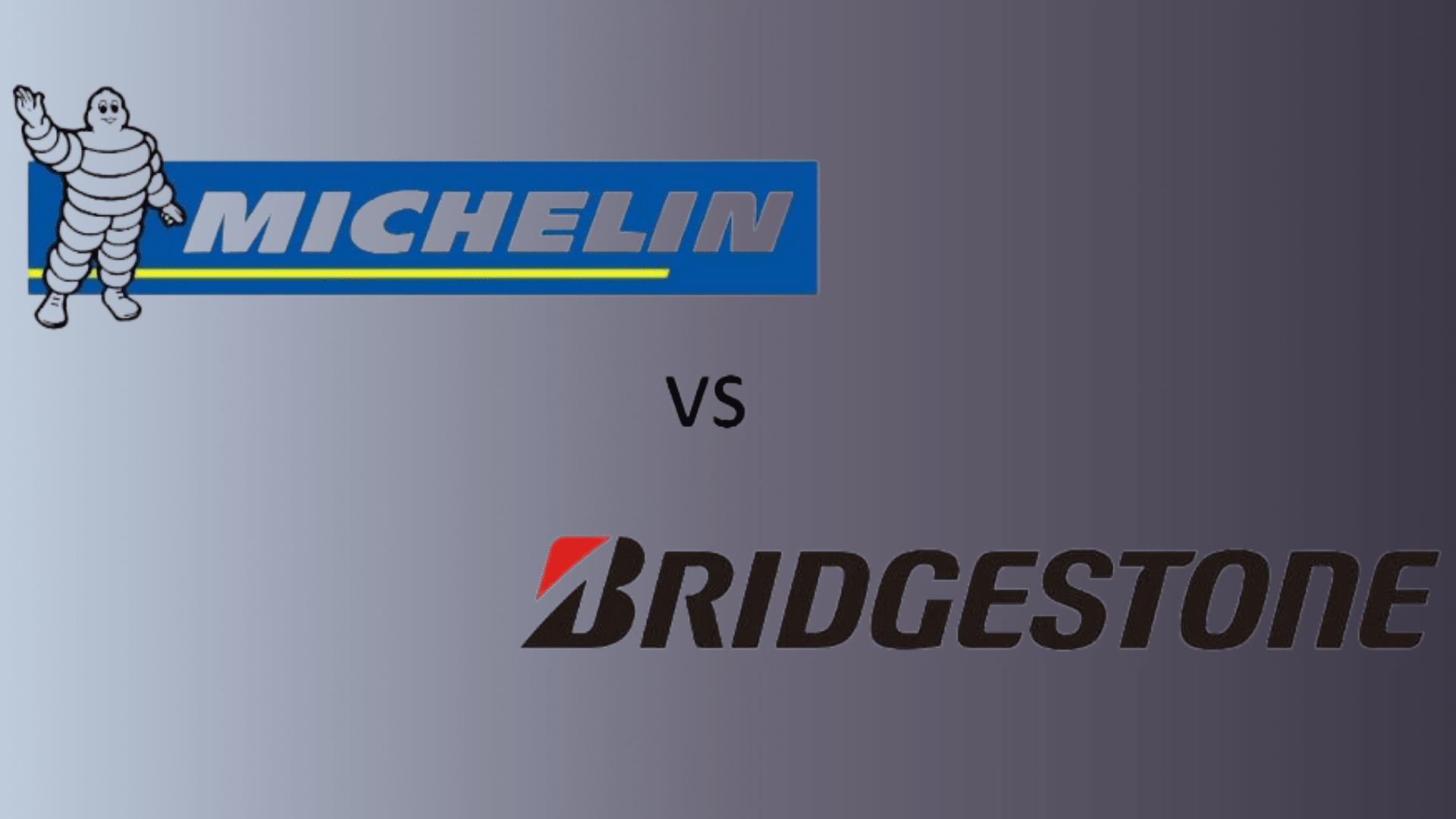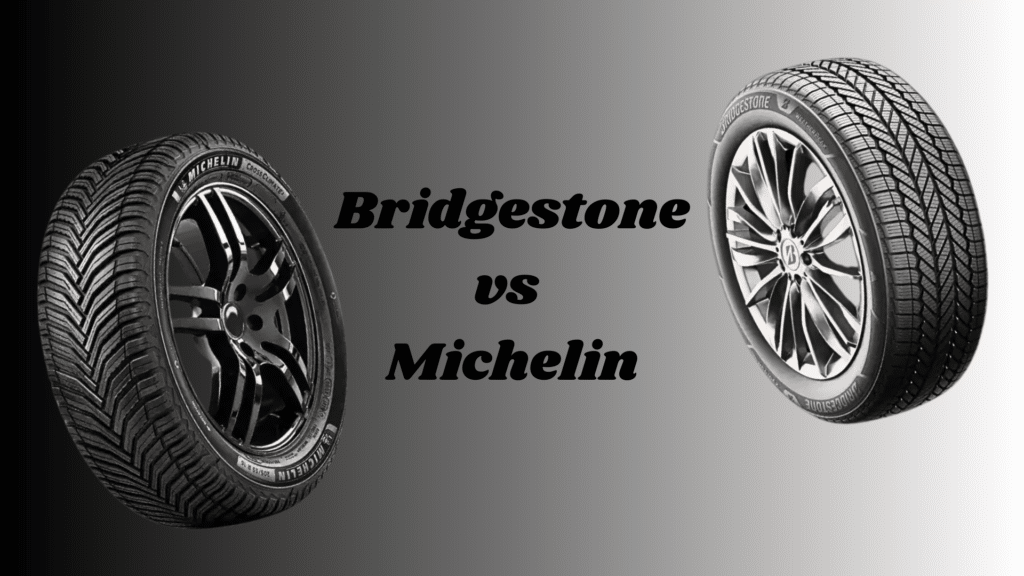Picking between Bridgestone and Michelin tires can feel overwhelming.
Both companies make quality tires, but which one is truly better for your car?
Your choice of tires affects everything from safety to fuel costs.
The right tires keep you safe in bad weather, help you brake faster, and make your car run more smoothly.
The wrong ones?
They could cost you more money and put your safety at risk.
In this guide, you’ll learn:
- How Bridgestone and Michelin compare in quality and price
- Which brand works best for different types of cars and driving
- How to pick the right tires for your needs and budget
We’ve done the research and tested both brands to help you make a smart choice.
Let’s look at what makes each brand stand out, so you can choose the best tires for your car.
Bridgestone and Michelin: A Brief Overview

Let me tell you about these two tire giants.
Michelin started in 1889 in France.
Two brothers, Édouard and André Michelin, turned their rubber factory into a tire company.
They became famous for making the first removable tire – a big deal back then.
Bridgestone came later, in 1931. Shojiro Ishibashi started the company in Japan.
Fun fact: “Ishibashi” means “stone bridge” in Japanese, which is how the name Bridgestone came to be.
What each brand is known for:
- Michelin focuses on luxury and high-end car tires
- Bridgestone excels in making tires for everyday cars
Both brands sell tires worldwide, but they serve different customers.
Michelin tires often go to premium car owners who want top performance.
Bridgestone appeals to practical drivers looking for reliable, well-priced tires.
These companies rank at the top of the tire industry.
Car makers like Toyota, Ford, and BMW trust both brands to put tires on their new vehicles.
The main difference?
Michelin tends to cost more and targets luxury cars, while Bridgestone offers more options for regular cars at lower prices.
Notable Features of Bridgestone and Michelin
Let me break down what makes each brand special.
Bridgestone’s Key Features
- Run-Flat Technology: You can drive up to 50 miles with a flat tire
- Long-lasting treads that work well in rain and snow
- Tires that help cars use less gas
- Strong grip on both dry and wet roads
Want to know what’s cool about Bridgestone?
They put tiny grooves in their tires to push water away.
This helps stop your car from sliding in the rain.
Michelin’s Key Features
- Special rubber that stays strong in hot and cold weather
- Tires that last longer than most other brands
- Designs that make less noise on the road
- Better handling when you turn corners
Michelin does something different with their rubber mix.
They use materials that help tires last longer while still gripping the road well.
Going Green: Both companies care about the earth.
Bridgestone makes tires with less oil, while Michelin uses special methods to waste less rubber.
They both try to help you save gas too.
I’ve tested both brands in wet weather.
Bridgestone tires feel solid and safe, while Michelin tires give you more control.
Both brands work hard to make tires that last long and keep you safe.
Remember: Good tires help your car run better and use less gas.
Both these companies put a lot of work into making tires that do this well.
Side-by-Side Comparison Table
| Feature | Bridgestone | Michelin |
|---|---|---|
| Price Range | $85-200 per tire | $115-300 per tire |
| Durability | 50,000-70,000 miles | 55,000-85,000 miles |
| Performance in Rain | Good grip, handles well | Better grip, less sliding |
| Winter Driving | Works well in light snow | Great in snow and ice |
| Comfort | Smooth ride, some road noise | Very smooth, less noise |
| Popular Models |
– Ecopia (daily driving) – Dueler (SUVs) – Potenza (sports cars) |
– Defender (daily driving) – Pilot Sport (sports cars) – LTX (trucks) |
| Best For |
– Daily commutes – Family cars – Budget-conscious drivers |
– Luxury cars – Performance vehicles – Long-distance driving |
| Gas Savings | Good fuel efficiency | Slightly better fuel savings |
Remember: These are general patterns.
Individual tire models might be different, so always check the specific tire you’re interested in.
Pros And Cons of Each Brand
| Brand | What They Do Well | Limitations | What Users & Experts Say |
|---|---|---|---|
| Bridgestone |
• Good prices for quality tires • Wide range of tire types • Strong in wet conditions • Easy to find dealers • Good everyday performance |
• Tires might need replacing sooner • Less grip in severe weather • Some road noise • Basic winter tire options |
Industry Rating: 4.2/5 <br><br> User Comments: “Good value for money” “Works well for daily use” “Fair prices” “Decent quality” |
| Michelin |
• Tires last longer • Strong road grip • Quiet rides • Better gas mileage • Top snow performance |
• Higher prices • Few budget choices • Limited store options • Sometimes out of stock |
Industry Rating: 4.5/5 User Comments: “Top quality” “Long-lasting” “Expensive but worth it” “Great in bad weather” |
Cost and Value: Bridgestone vs Michelin
Price Ranges for Common Car Tires
- Bridgestone sedan tires: $85-150 each
- Michelin sedan tires: $115-200 each
- Bridgestone SUV tires: $150-250 each
- Michelin SUV tires: $180-300 each
Is the Extra Cost Worth It?
I’ve looked at how these tires perform over time.
Here’s what the math shows:
Bridgestone tires often need replacing after 50,000-70,000 miles.
Michelin tires typically last 55,000-85,000 miles.
Yes, you pay more for Michelin up front, but they often last longer.
Warranty Coverage
- Bridgestone offers 5-year warranties
- Michelin gives 6-year warranties
- Both fix manufacturing problems for free
- Both help pay for replacement if tires wear out too soon
What You Get After Buying: Bridgestone has more shops, making it easier to get help when you need it.
Michelin has fewer locations but often provides better service.
Money-Saving Tip: Watch for sales.
Both brands offer good deals several times a year, especially during holiday weekends.
Bridgestone or Michelin: Which One Suits You Best?
For City Driving
Pick Bridgestone if you:
- Drive mostly in the city
- Want good tires at lower prices
- Need basic all-season performance
- Have a standard car or small SUV
Pick Michelin if you:
- Drive long distances often
- Want tires that last many years
- Care most about comfort
- Own a luxury or high-end car
For Different Weather
In rainy areas: Both brands work well, but Michelin gives better wet grip.
In snowy areas: Michelin winter tires perform better in ice and deep snow.
In hot climates: Both hold up well, but Bridgestone costs less to replace.
For Different Cars
Family Cars and Minivans: Bridgestone offers good value and safety.
Sports Cars: Michelin provides better handling and grip.
SUVs and Trucks: Both work well – pick Bridgestone to save money or Michelin for longer life.
Tips for Choosing
- Check your car manual
- Think about your yearly driving miles
- Consider your local weather
- Look at your budget
- Ask about current sales
Remember: The best tire for you matches your driving needs and budget.
Don’t feel pressured to buy the most expensive option if a mid-range tire will do the job well.
Conclusion
Both Bridgestone and Michelin make reliable tires that can serve you well.
The choice really comes down to what matters most to you.
If you want to save money while still getting good quality, Bridgestone is your best bet.
If you’re after top performance and don’t mind paying more, Michelin tires are worth considering.
Think about your daily drives, the weather where you live, and how long you plan to keep your car.
These factors will help you make the right choice.
Have you tried either brand?
Share your experience in the comments below.
If you have questions about specific tire models or need more advice, feel free to ask.
Your real-world feedback helps other drivers make better choices.
Frequently Asked Questions
How Long Do Bridgestone Tires Last?
Most Bridgestone tires last between 50,000 to 70,000 miles.
With proper care and regular rotation, depending on your driving habits and road conditions.
Are Michelin Tires Worth the Higher Price?
Michelin tires often pay for themselves through longer life, better fuel efficiency, and improved safety features.
Making them worth the investment for many drivers.
Can I Mix Bridgestone and Michelin Tires?
It’s not recommended to mix tire brands, as this can affect your car’s handling and safety.
Always use the same type of tires on all wheels.


